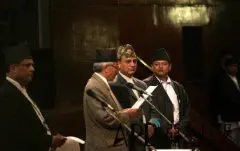** By APD Writer Melo M. Acuna**
MANILA, July 13 (APD) - Foreign investors are looking for a dynamic and growing market. The country’s economic growth has been consistent for the past decade and a half as manifested by growth of above 5 percent.
This was how DFA Undersecretary for International Economic Relations Manuel A. J. Teehankee described the Philippines as a viable and attractive business haven over the weekly public affairs program Wednesday Roundtable @ Lido.
“Another reason we are attractive is our growing middle class with more than 50 percent of the population below 25 years of age,” he further said. He described the country as a “demographic sweet spot,” making it very attractive because of young and moneyed consumers.
He also cited the country’s stability and respect for the rule of law.
“They want a level playing field, respect for the rule of law and recourse to the judicial or legal system,” he explained.
He described President Rodrigo Duterte as a person with a strong image, a “positive image for expressing his views clearly.”
He explained when President Duterte discussed his ten-point socioeconomic agenda at the World Economic Forum’s focus on ASEAN in Phnom Penh, he attracted worldwide attention.
“That was where we launched the Build, Build, Build program,” he said as he explained the program’s thrusts on taking care of overseas Filipinos who comprise the country’s 10 percent from a projected population of over 103 million.
Last year’s cash remittances amounted to US$ 26.9 billion.
The Duterte administration’s goal of delivering better livelihood opportunities remain a top priority.
Asked of the country’s existing foreign policy, Undersecretary Teehankee said President Duterte is the chief architect for foreign policies.
“We pick signals from him and your Department of Foreign Affairs works closely with the economic managers,” he added.
According to Undersecretary Teehankee, he is optimistic President Duterte will successfully deliver
his programs because “everything is transparent coupled with knowledge and technology.”
(ASIA PACIFIC DAILY)
 简体中文
简体中文

